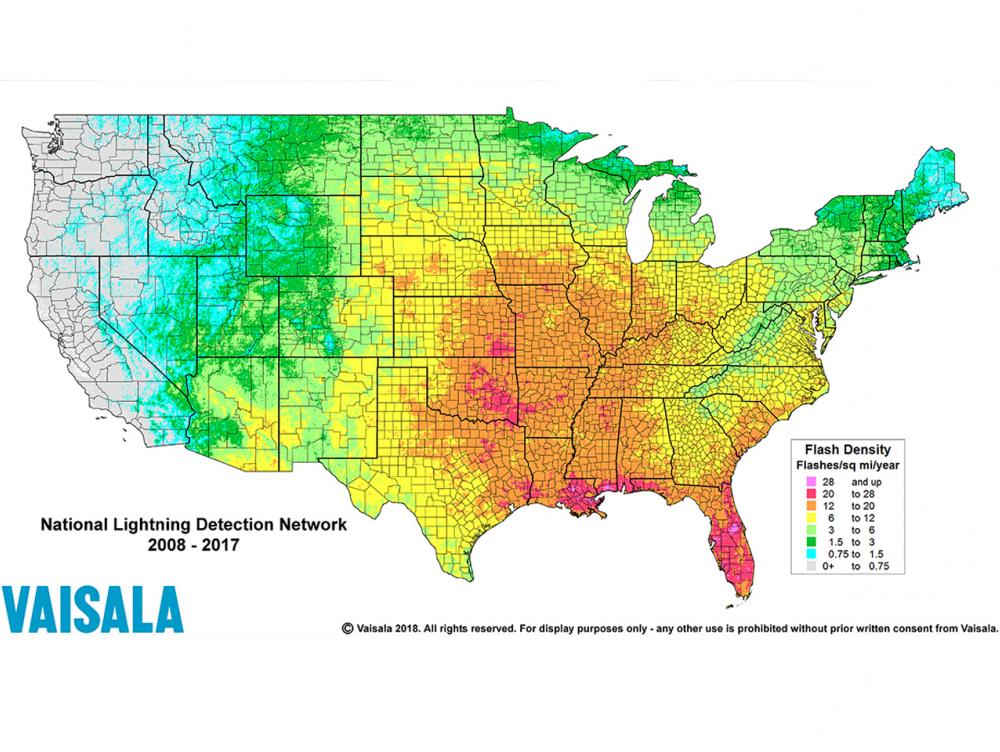Best Practices in Lightning Protection and Metal Roof Construction
The materials used in the construction of a metal roof, specifically steel, are conductive. However, they do not attract lightning strikes according to the Metal Construction Association.
The reality is that a properly installed metal roof may be an advantage if a building is struck by lightning.
But before we jump into that, let's look at what contributes to a lightning strike.
According to the MCA there are four factors that contribute to an increased likelihood of a lightning strike on a building:
- Topography - higher elevations get more strikes
- Building height - the highest points relative to neighboring structures are more likely to be hit by lightning
- Building size - more surface area means more chance of a strike
- Geography - some areas get more lightning strikes than others
The MCA technical bulletin "Lightning Strikes and Metal Roofing" states that metal buildings are no more or less prone to be hit by lightning than a building using another roofing material.
How to protect a building using metal roofing materials from a lightning strike
Air terminals are the first place to start. These are commonly made of copper or aluminum. They are also referred to as strike termination devices. And in the past they were referred to as lightning rods. These terminals are installed at the highest point of the building to intercept a lightning strike before it hits the building. The terminals are connected to ground wires which create a path for the lightning to reach the ground without damaging the structure.
Read more about proper terminal installation here and in NFPA 780.
The MCA Lightning Best Practices Guide also includes specific recommendations for exposed fastener, standing seam, and metal roofs where the terminals must penetrate the roofing materials.
The MCA report states that "metallic siding, wall cladding and metal roof panels are designed to fulfill the mechanical function of weathertightness, but these metals are not designed for safe electrical continuity in the event of a lightning strike. A complete lightning protection system is required that connects the air terminals and conductor leads either to a recognized, adequate grounding source or to the structural steel which is then grounded at grade level to a recognized, adequate grounding source."
There is no way to lessen the likelihood of a lightning strike other than to move a building to a safer location. Using lightning protection systems can lessen the consequences of a strike, though.
How likely is your building to be hit by lightning?
https://www.vaisala.com/en/products/data-subscriptions-and-reports/data-sets/nldn
As you can see, the threat of lightning strikes varies widely across the United States.
What happens when lightning strikes a building?
Lightning is nothing to take lightly. It is a serious threat to people and property and should be taken seriously. A few things can reduce the potential of lightning damage including:
- Construction materials - if the framing and roofing of a structure are electrically conductive, the charge from a lightning strike will pass through these materials and not build up heat through resistance, reducing the possibility of fire.
- Building materials - if the building is constructed with non-combustible materials, they will not be a fuel source for a possible fire resulting from a lightning strike.
- What's in the building - sensitive flammable materials in the building are susceptible to ignition.
In fact, a properly grounded metal roof, in accordance with the requirements of NFPA 780, will actually conduct the energy from a lightning strike over the broader area of the roof reducing the amount of heat transferred to the building and reducing the potential of damage due to fire. As an electrical conductor and a noncombustible material, the risks associated with use of a metal roof may even be a more desirable construction option."
Please read the MCA Lightning Best Practices Guide and the MCA technical bulletin Lightning Strikes and Metal Roofing to get the latest up to date technical information so that your next roofing project is as lightning safe as possible.
About McElroy Metal
Since 1963, McElroy Metal has served the construction industry with quality products and excellent customer service. The employee-owned components manufacturer is headquartered in Bossier City, La., and has 14 manufacturing facilities across the United States. Quality, service and performance have been the cornerstone of McElroy Metal’s business philosophy and have contributed to the success of the company through the years. As a preferred service provider, these values will continue to be at the forefront of McElroy Metal’s model along with a strong focus on the customer.



.png?width=767&name=What%20to%20Expect%20When%20You%20Order%20From%20McElroy%20Metal%20(1).png)


.png?width=440&height=293&name=How%20to%20Install%20Metal%20Roofing%20Over%20Existing%20Metal%20Roofs%20(1).png)


Comments on this article:
Scroll down to the bottom to submit a comment and join the conversation. Need help or have a question? Please contact us. Looking for a distributor or contractor? Please click here to get started.